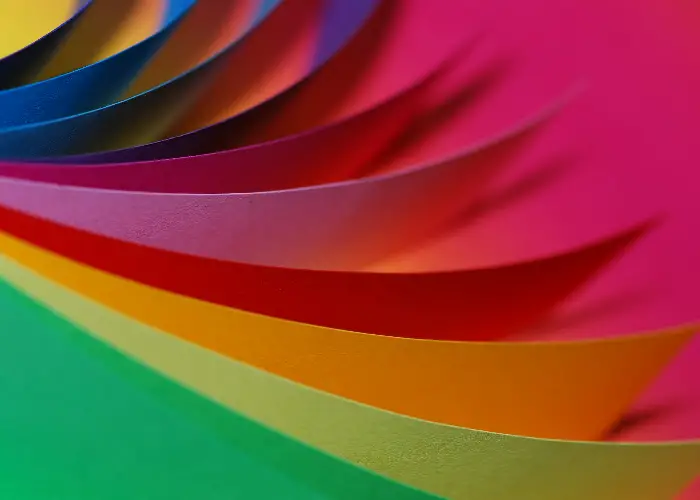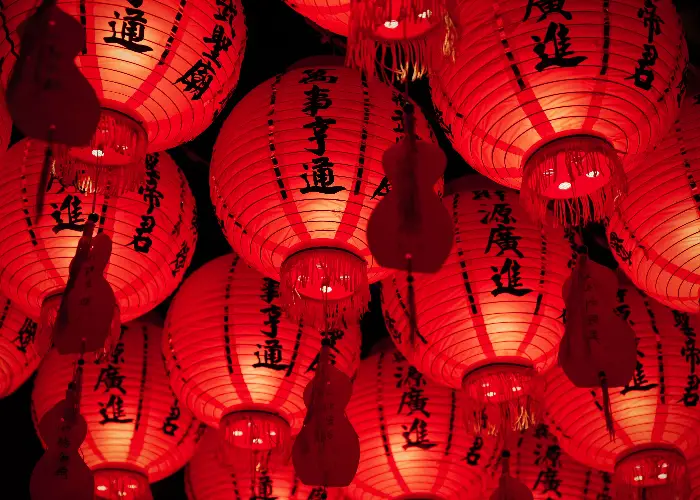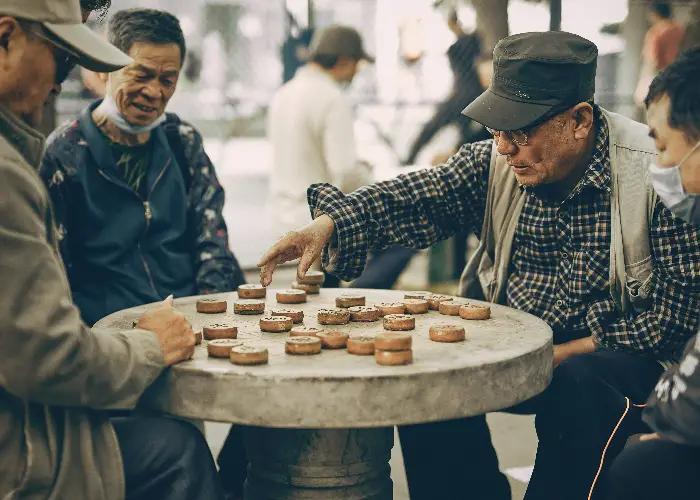Introduction: The Intricacies of Color in Chinese Feng Shui
Welcome to the fascinating world of Chinese Feng Shui, where every aspect of your environment plays a crucial role in promoting harmony, balance, and positive energy in your life. Today, we dive deep into one aspect that often perplexes many Feng Shui enthusiasts – the intricate relationship between colors and this ancient art.
Imagine walking into a room painted with vibrant red walls or adorned with bold splashes of fiery orange. On one hand, you may find yourself drawn to these vivid hues for their energy and intensity. On the other hand, you might wonder if they align with the principles of Chinese Feng Shui.
Have you ever questioned why certain colors seem to clash with what you’ve learned about Feng Shui? Why do they go against its traditional teachings? Well, get ready because we unravel this mystery right here!
Color holds immense power in shaping our emotions, influencing our moods, and even impacting our overall well-being. In Chinese culture and philosophy, color is deeply intertwined with the principles of Yin Yang and the Five Elements – Wood, Fire, Earth, Metal, and Water.
Throughout history, wise masters have carefully studied the relationship between colors and their corresponding elements for millennia. They have discovered that each color possesses unique energies that can either enhance or disrupt the flow of Qi (life force energy) within a space.
In this blog post series on feng shui and how it can benefit daily life let’s explore: The Intricacies of Color in Chinese Feng Shui – Understand why certain hues may seem conflicting at first glance but can actually be harmonized effectively when approached from an informed perspective.
So if you’ve ever wondered why your favorite colors don’t seem to align with traditional Feng Shui practices or if you’re looking to create a balanced color scheme that fosters positive energies according to this philosophy- stay tuned! We’re about to embark on a colorful journey where ancient wisdom meets modern insights!
Get ready as we demystify the fascinating interplay between colors and Feng Shui principles. Together, let’s unlock the mystery and discover how to create a harmonious environment that nurtures both body and soul. Are you ready to immerse yourself in this captivating world? Let’s begin!

Understanding the Color Theory in Feng Shui
Understanding the color theory in feng shuiis the key to creating a harmonious and balanced living space. In this section, we delve into the principles behind this ancient art and explore how colors can influence the flow of energy within your home.
Colors are much more than just aesthetically pleasing elements; they carry distinct vibrations that can impact our emotions, productivity, and overall well-being. In Feng Shui, it is believed that each color represents specific energies related to the Five Elements – Wood, Fire, Earth, Metal, and Water.
Let’s start with Wood, symbolizing growth and vitality. Its associated colors are green and brown. Green brings a sense of renewal and harmony to your environment while brown provides stability and grounding.
Fire represents passion, excitement, and high energy. Red is its primary color along with vibrant shades of orange and purple. These fiery hues create warmth but should be used in moderation to prevent overstimulation.
Earth tones like yellow help foster stability, nourishment, and grounding energies within your space. They evoke feelings of joyfulness while promoting balance in relationships.
Metal resonates with clarity, precision as well as a sense of elegance. White or metallic hues such as silver or gold amplify the presence of this element in your surroundings.
Finally comes Water representing calmness,
tranquility
and
relaxation.
Its colors include shades of blue
and black,
which encourage
a soothing atmosphere
that deepens introspection
and promotes better communication
It’s worth noting that finding balance is essential when using colors in Feng Shui; too much or too little can disrupt the desired energy flow within a space.Contrasting yet complementary combinations create dynamic environments that support overall well-being.So keep these insights in mind as we continue our journey through Chinese Feng Shui color wisdom!
Interpreting the Five Elements and Color Associations
Interpreting the five elements and their color associations is crucial to harnessing the harmonizing power of Chinese Feng Shui in your living space. In this section, we explore the profound relationship between these elements and how they manifest through specific colors.
The Five Elements – Wood, Fire, Earth, Metal, and Water – represent distinct energies within Feng Shui practice. Each element has its unique characteristics and is associated with specific colors that resonate with its essence.
Wood symbolizes growth, renewal, and vitality. Green represents the lushness of nature, while brown signifies stability and grounding. Incorporating these colors in your decor or furniture choices can evoke a sense of balance and freshness.
Fire embodies passion, creativity, and high energy. Vibrant shades of red ignite enthusiasm while shades of orange enhance joyfulness. Purple adds an air of luxury when used selectively to avoid overwhelming the space.
Earth tones create stability,
nourishment,
and grounding energies.
Yellow radiates warmth,
enhances relationships.
Paired with earthy brown tones,
it evokes a comforting ambiance within your home.
Metal reflects clarity,
precision as well as elegance.
White provides a clean backdrop
for subtle pops of metallic silver or gold.
By incorporating these colors into your environment,
you invite clarity
and cultivate refined aesthetics.
Water signifies calmness
tranquility
and relaxation.
Shades like blue bring serenity
to spaces meant for rest
or meditation.
Black echoes depth
and introspection,
imbuing environments
with a sense ofsought after focus
Understanding these color associations coupled with the corresponding element helps you create balanced Feng Shui arrangements that enhance specific areas or aspects of life.Supportive interactions between various elements elevate energy flow within your space.So now let’s deepen our knowledge as we explore further on this enlightening journey through understanding color associations in Chinese Feng Shui

Identifying Color Conflicts in Your Feng Shui
Identifying color conflicts in your feng shuiis essential to maintain a harmonious and balanced energy flow within your living space. In this section, we will uncover how to recognize when colors clash and create disharmony in your Feng Shui arrangement.
While each color carries its unique energy, it’s important to understand that not all combinations work synergistically. Certain color clashes can disrupt the desired flow of Qi (life force energy) within a space, hindering the benefits of Feng Shui.
One common conflict arises when elements with opposing energies are placed together. For example, placing vibrant red accents (representing Fire) in an area associated with relaxation and tranquility (representing Water) can create energetic imbalance. To mitigate this conflict, consider adding cooling blue tones or emphasizing calming earth elements to restore equilibrium.
Another aspect to consider is the intensity or saturation of colors. Mixing highly saturated hues may result in visual overload and overstimulation. Instead, aim for a balance between bold shades and softer tones to create a visually pleasing atmosphere that supports positive energy flow.
Additionally, contrasting colors on opposite ends of the color spectrum can generate tension within a space. For instance, combining red and green – complementary colors – might evoke strong visual contrast but disrupt overall harmony. Consider toning down the intensity or using more muted variations of these colors for better integration.
By being mindful of these potential conflicts while designing your Feng Shui environment,
you can proactively identify areas that require adjustments.
Honoring the principles
of complementary energies,
optimal saturation levels
and well-balanced contrasts
will help you cultivate an energetically harmonious space.
So let’s continue our journey as we explore strategies for resolving these color conflicts
within our Feng Shui practices
Resolving Color Dilemmas for Positive Energy
Resolving color dilemmas for positive energyis a crucial step in creating a harmonious Feng Shui environment that supports your overall well-being. In this section, we explore effective strategies to overcome color conflicts and restore balance within your space.
When faced with conflicting colors, one approach is to introduce intermediary shades that bridge the gap between contrasting hues. For instance, if you have a clash between red (Fire) and green (Wood), consider incorporating earthy tones like beige or taupe to create cohesion and facilitate a smoother energy transition.
Another technique is the strategic placement of accessories or decor items in complementary colors. Adding accents in compatible shades can help mitigate clashes while still maintaining the desired effect you wish to achieve. For example, if you have predominantly cool blue tones (Water), introducing small hints of warmer yellow (Earth) can help establish a harmonious connection.
Playing with different textures and patterns can also alleviate color conflicts by redirecting attention. Textures such as woven fabrics or textured wallpapers can soften the visual impact of clashing colors and create a more cohesive atmosphere.
In some instances, simply adjusting the proportion of conflicting colors within a space can make a significant difference. Opt for dominant hues that align with the purpose of each room while using contrasting elements as accents rather than overwhelming features.
With careful consideration,
creative problem-solving,
and mindful adjustments,
you have the power
to transform conflicting colors into an energetically balanced Feng Shui masterpiece.
By applying these strategies,
you can remedy any color dilemmas
to cultivate positive energy flow
and promote optimal harmony within your living space.
Join us as we conclude our exploration
and discover invaluable tips on harmonizing color
with key Feng Shui principles in our final section!

Conclusion: Harmonizing Color and Feng Shui Principles
In conclusion, harmonizing color and Feng Shui principles is the key to creating a balanced and energetically vibrant living space. Throughout this blog post series, we’ve explored the intricacies of color in Chinese Feng Shui, understood the color theory and associations with the Five Elements, identified potential conflicts, and discovered strategies for resolving them.
By integrating these insights into your home or workspace, you can harness the power of colors to enhance various aspects of your life. Whether you seek to promote relaxation in your bedroom with soothing blue tones or stimulate creativity in your office with pops of fiery red, aligning colors with Feng Shui principles can help optimize energy flow.
Remember that balance is essential when working with colors. Consider the purpose and function of each room as well as its corresponding element to guide your color choices. Pay attention to saturation levels, contrasting combinations, and intermediary hues to create a visually cohesive environment that supports positive energy flow.
Now armed with knowledge about harmonizing colors in Feng Shui design,
it’s time to take action! Assess your existing space
and make conscious adjustments where needed.
Experiment,
trust your intuition,
and embrace the transformative power
that color can bring
to enrich every aspect of daily life.
Embark on this colorful journey filled
with harmony,
balance,
and renewed energy.
Embrace Chinese Feng Shui principles as guiding tools
for creating a sanctuary that nurtures both body
and spirit.
So go forth
and let vibrant colors dance alongside ancient wisdom.
Transform not only your physical surroundings but also uplift
your overall well-being through the artful fusion
of color and Feng Shui!
Ready to infuse positive energies into every corner?
Start now by embracing harmonious colors within YOUR own space.
Your journey awaits!

Sign up